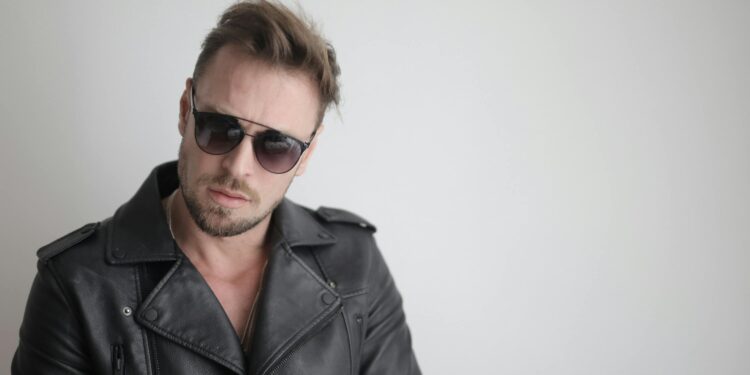Hair is never just hair. Across cultures and histories, it has carried meaning, identity, and self-expression. From the bold cuts of the 1920s flapper to the long, effortless waves that marked the 1970s, hair has always been a marker of who we are and how we want to be seen. It is not just an accessory. It is a statement.
Sociologists writing through publishers like the University of Toronto Press have shown that style is more than surface. It shapes how we interact with the world and how the world interacts with us. Hair is a crucial piece of that design. When it is missing, thinning, or disappearing, the absence is felt more deeply than we expect.
The Confidence We Tie to Hair
Confidence and hair are inseparable. A good hair day can change how you carry yourself. A period of hair loss can create a spiral of self-consciousness that touches every part of life. Women and men alike report that hair loss influences self-esteem, how attractive they feel, and even how confident they are at work or in social spaces.
The Canadian Mental Health Association emphasizes the link between body image and mental well-being. When the mirror reflects a version of yourself that does not match the way you feel inside, it creates tension. That tension shows up as hesitance, stress, or even withdrawal from activities you once loved. Hair, in other words, is far more than a cosmetic detail. It is a psychological anchor.
Why Hair Loss Feels Like a Style Crisis
Losing hair is not just about scalp health. It is about style. The haircut you once relied on no longer works. The parting you wore for years begins to reveal thinning patches. Styling takes longer but looks less like you want it to. Hair loss strips away more than strands. It disrupts the consistency of your personal design.
For women, it can feel particularly unfair. While conversations about male hair loss are common, female hair loss is still under-discussed, even though millions experience it. For men, too, it can feel like an early loss of youth or vitality. In both cases, the impact is profound: hair loss feels like the missing piece in the way you show yourself to the world.
The Rise of Modern Solutions
The good news is that style has always evolved alongside innovation. Just as design embraces new technologies, so does self-care. Outdated, invasive methods of hair restoration are giving way to approaches that prioritize natural results and minimal downtime.
One of the most significant advances is the fue hair transplant. This treatment extracts individual hair follicles and places them with precision to create a fuller, natural-looking hairline. Unlike older strip methods, it leaves no visible scarring and requires far less recovery time. For anyone balancing busy careers and personal lives, this is the kind of solution that fits seamlessly into a modern lifestyle.
How FUE Restores More Than Hair
FUE is not just a technical process. It is a form of design. Every follicle placement is intentional, creating a natural frame that matches a person’s features and style. The artistry is as important as the science.
What makes this powerful is not only the return of hair itself but the return of what it represents. Restoring hair often means restoring confidence, vitality, and even spontaneity. Suddenly, you feel like yourself again. That feeling influences how you speak, how you connect, and how you design your life moving forward.
Style as a Form of Self Design
We design our homes to reflect our taste. We curate wardrobes to reflect our identity. We create digital presences that reflect our professional strengths. Hair deserves the same intentionality. It is part of the design of self. A visible, everyday detail that tells the world who we are.
Design is about alignment. When the outer image aligns with the inner self, there is harmony. When it does not, there is friction. Hair restoration gives women and men the chance to reclaim that alignment. It is not about vanity. It is about design.
Stories of Reinvention
Consider the woman in her 40s who always loved her thick hair but began to notice widening parts and thinning at the crown. She stopped wearing it loose, opting for buns and scarves. After treatment, she returned to her signature waves and reported feeling like “herself again” at work presentations.
Or the man in his 30s who felt older than he was because of receding temples. He noticed colleagues joking about his “professor look” and began avoiding photos. Following restoration, he regained a sharper hairline, and with it, a renewed sense of youth that made him more engaged socially and professionally.
These are not just cosmetic shifts. They are reinventions that ripple through careers, relationships, and self-esteem.
Balancing Beauty With Science
The artistry of hair restoration must always be matched with science and safety. It is not enough for results to look good. They must also be done in environments that prioritize health. Health Canada regulates medical devices and ensures safety standards for procedures across the country. Choosing clinics that align with these standards protects both results and well-being.
It is this balance (beauty with science) that makes modern hair restoration powerful. The process is not about shortcuts. It is about carefully blending expertise and aesthetics to create confidence that lasts.
The Lifestyle That Supports Confidence
Hair restoration is transformative, but lifestyle choices keep the momentum going. Nutrition, sleep, and stress management all play roles in how strong and healthy hair grows. Regular medical checkups also ensure that underlying conditions are not overlooked.
The Canadian Task Force on Preventive Health Care underscores the importance of regular preventive care, from cardiovascular screenings to blood pressure checks. While not directly about hair, these steps support overall vitality, which in turn influences how you look and feel. Confidence, after all, comes from the sum of these parts: restoration treatments, lifestyle choices, and long-term health care.
Designing a Future With Choice
The real breakthrough is choice. For years, hair loss was something to accept quietly. Now, it is something you can address confidently. Some will choose restoration. Others will not. What matters is the autonomy.
In design, every element tells a story. The same is true in life. Choosing to restore hair is choosing to rewrite a story in a way that feels aligned, intentional, and empowering. It is not about chasing youth. It is about reclaiming presence.
The Takeaway
Hair is not trivial. It is the missing piece of style that connects identity, confidence, and design. When it goes, its absence is felt everywhere. But with modern solutions like FUE, it does not have to remain missing.
The return of hair is the return of harmony between how you feel and how you look. It is the restoration of confidence, the reinvention of presence, and the empowerment to design yourself on your own terms. That is when hair becomes more than strands. It becomes the piece that makes the whole picture complete.







